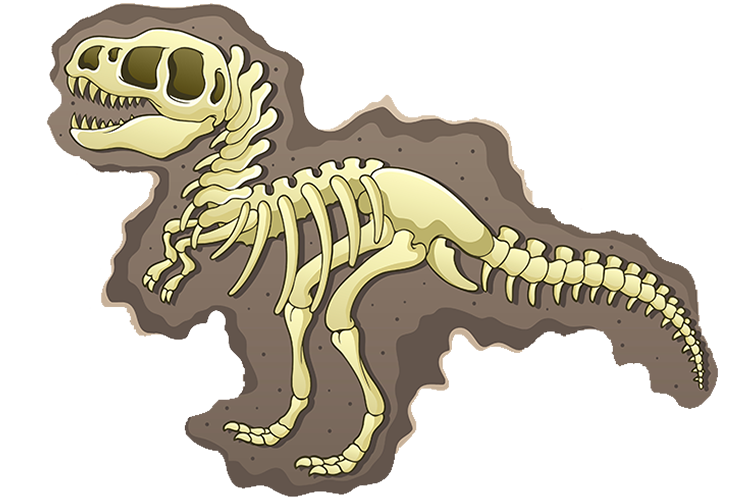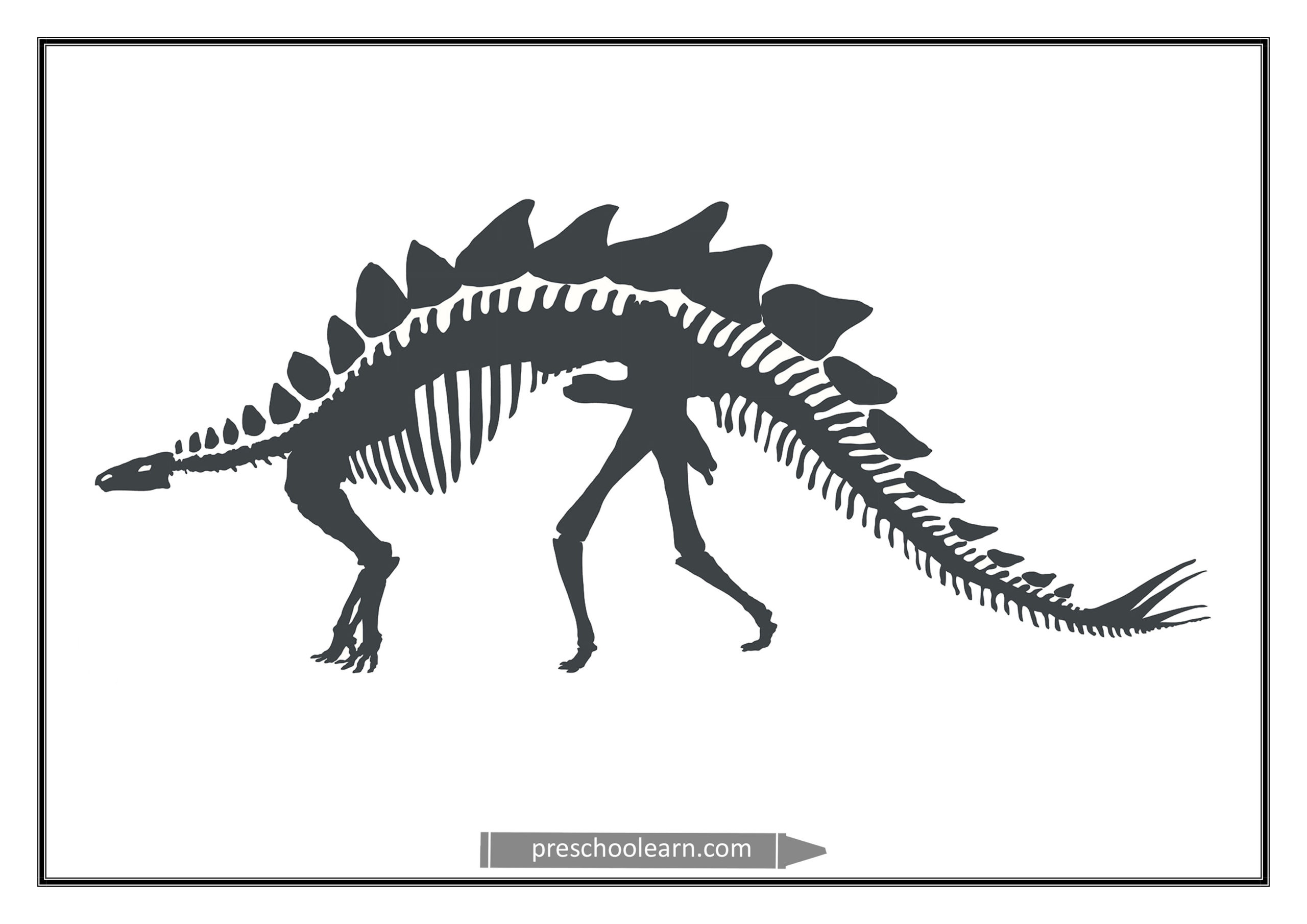Children will get to know hypotheses of the extinction of dinosaurs and words: paleontology and paleontologist. They will become paleontologists – they will look for and clean from the sand ‘dinosaurs bones’ and they will make skeletons out of them.
Materials:
a song entitled ‘Hello!’, ringos/sashes, blocks/ gymnastic bags, picture cards with a paleontologist and his/her tools, a nursery rhyme entitled ‘Romp, stomp, chomp’, sack, boxes with sand and buried pasta, shovels, strainers, loupes, brushes, tambourine, different kinds of pasta, glue sticks, A4 sheets/ sheets with skeletons of dinosaurs, dinosaurs figurines/ pictures cards with dinosaurs, a song entitled ‘10 little dinosaurs’.
Activity description:
1. ‘Hello!’ – greeting children with the song – children sit in a circle with their teacher. Teacher turns on the song and shows the correct movements. The group tries to imitate them.
Hello, hello, hello, how are you? (wave to each other)
Hello, hello, hello, how are you? (wave to each other)
I’m good. (show one thumb)
I’m great! (show two thumbs)
I’m wonderful! (raise thumbs up)
I’m good. (show one thumb)
I’m great! (show two thumbs)
I’m wonderful! (raise thumbs up
Hello, hello, hello, how are you? (wave to each other)
Hello, hello, hello, how are you? (wave to each other)
I’m tired. (wipe forehead with a hand)
I’m hungry. (massage the belly)
I’m not so good. (wave index finger)
I’m tired. (wipe forehead with a hand)
I’m hungry. (massage the belly)
I’m not so good. (wave index finger)
2. ‘Why did the dinosaurs become extinct? – introduction to the hypothesis of the extinction of dinosaurs – teacher asks children: ‘Where are dinosaurs now?’, ‘Why did they go extinct?’. After their answers, teacher talks about that:
65 million years ago dinosaurs disappeared from our planet. Scientists are still trying to establish the reasons for this. There are many theories about this, but we don’t know which is true. Some scientists think that there were powerful volcanic eruptions it released a huge cloud of ashes and smoke with the lava. It would completely block the sun and without it, there wouldn’t grow plants – food of herbivorous dinosaurs. Also, it could cause the freezing of animals. The others think that the Earth was surrounded by space dust from some star explosion. There is also the theory that a shower of comets hit the Earth or a meteorite crashed. It could cause fires, smoke and dust clouds and climate change. It is possible that dinosaurs couldn’t stand rapid temperature changes. They weren’t adapted to high and often temperature fluctuations. There were long periods of severe winters and hot summers, so dinosaurs could run out of food. Some scientists claim that dinosaurs are poisoned with new plants with poisons. There were deadly to them. The extinction of herbivores could lead to the starvation of carnivores that fed them.
3. ‘Dinosaurs crossing the river’ – movement activity – teacher places in the kindergarten room ringos/sashes – one about 20 centimeters from the other, in an irregular line. He/she puts a block/bean bag to every second ringo/sash. Children – ‘dinosaurs’ – line up on a ‘train’ on one side of the room in front of the first ringo/sash. Their task is to go ‘across the river’ from one side of the kindergarten room to the other, but only on ringos without the block. Continue this activity until all the children take part in it.
4. ‘Paleontologist’ – didactic activity – teacher asks children: ‘If dinosaurs went extinct so long ago, how do we know about them?’, ‘Who is the dinosaur researcher?’, ‘What is the science about them?’. Next after their answers, teacher shows them picture cards with a paleontologist and his/her tools. Teacher talks with children about it.
Paleontology is the science of the history of life on the Earth based on the remains of plant and animal organisms.
A paleontologist is a scientist, who explores the history of life on the Earth based on the remains of plant and animal organisms. He gets a signal about discovery, goes there and documents everything in photos. He extracts very accurately and gently priceless specimens and fossils. He uses pickaxes, shovels, hammers, chisels and brushes for cleaning specimens in his work. Next, they are transported to the laboratories. They can be explored carefully. The reconstruction of a dinosaur skeleton reminds a large puzzle, but it isn’t easy, because we usually don’t have the picture and it can last for years. After the research, the cleaned and secured exhibits go to museums. We can admire them in full.
5. ‘What did Dino hide?’- movement and perceptive activity – teacher places on the carpet the picture cards with paleontologist’s tools (4-7 – it depends on the ability of the group). Children stand in the circle, hold their hands and walk around the circle, saying the following nursery rhyme:
Romping, stomping, chomp chomp chomping
Towering ten feet high or more
Romping, stomping, chomp chomp chomping
T-rex gives a great big: ROAR!
After that, they squat, close their eyes and lean their head on their knees. Teacher puts into the sack a picture card/two picture cards. Finally, children have to guess what is hidden.
6. ‘We are paleontologists’ – research activity – teacher divides children into several groups, e.g. by countdown and asks them to go to the tables. There are boxes, filled with sand, buried pasta, and tools for paleontologists – shovels, strainers, loupes, brushes. Children make palaeontological excavations. They look for, observe and clean up their finds with tools. After short movement activity, they will try to reconstruct dinosaur skeletons from finds.
7. ‘Skeletons’ – movement activity – children move in the kindergarten room to the rhythm of a tambourine. During a break, they freeze. They take the position of a reconstruction of a dinosaur in a museum. Repeat it 5-6 times.
8. ‘Dinosaur skeleton’ – artwork – teacher tells children how to do the artwork (depending on options: smear the dinosaur skeleton with a glue stick and compose various pasta to fill all the skeleton/we ‘paint’ by brush with the glue stick and compose on it the pasta to create the skeleton of a dinosaur). Next, teacher asks children to go to the tables, where they can find art supplies for the artwork. After the work, they must clean up, sit in a circle on the carpet and present their works, naming dinosaurs from their skeletons.
9. ‘What did Dino hide?’- movement and perceptive activity – teacher places on the carpet the picture cards with paleontologist’s tools or dinosaur figurines/picture cards with dinosaurs. Children stand in the circle, hold their hands and walk around the circle, saying the following nursery rhyme:
Romping, stomping,chomp chomp chomping
Towering ten feet high or more
Romping, stomping,chomp chomp chomping
T-rex gives a great big: ROAR!
After that they squat, close their eyes and lean their head on their knees. Teacher puts into the sack a picture card/two picture cards/three picture cards. Next, children have to guess what is hidden.
10. ‘10 little dinosaurs’ – learning the song – children sit in the circle with their teacher. They repeat after him/her the lyrics of the song and try to sing it.
11. ‘10 little dinosaurs dance’ – movement activity – children stand in a circle. Teacher shows the correct gestures to a song entitled ‘10 little dinosaurs’ and children imitate them. The movie with them is available here.
Attachments:
Picture cards for the ‘Paleontologist’ activity
Picture cards for the ‘Paleontologist’ and ‘What did Dino hide?’ activity
Dinosaurs skeletons for the ‘Dinosaur skeleton’ artwork
Picture cards for the ‘What did Dino hide?’ activity
Pages used:
- https://supersimple.com/song/hello/ – a song entitled ‘Hello!’
- https://love-and-lollipops.blogspot.com/2014/07/fun-with-dinosaurs-dinosaur-fossil.html – an idea of ‘Dinosaur skeleton’ artwork
- https://supersimple.com/song/ten-little-dinosaurs/ – a song entitled ‘10 little dinosaurs’
- https://supersimple.com/how-to-teach-super-simple-songs/how-to-teach-ten-little-dinosaurs/ – gesture show for a song entitled ‘10 little dinosaurs’





